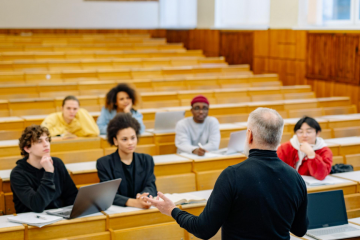“Yesterday is gone. Tomorrow has not yet come. We have only today. Let us begin.” Mother Teresa.
The learning environments have undergone a rapid change with the arrival of digital natives and the inclusion of technology in teaching and learning. Developments like e-learning, blended learning and Online Classrooms have resulted in a re-evaluation of the transmission based system where the teacher serves as the navigator of knowledge. There is an increased interest in helping to facilitate learning and helping learners construct and personalize learning. These changing times call for a better link between learning and learning environments. This need is increasingly visible in schools today, where the learning environment is largely nestled within the virtual space.
Knowledge is seen as a dynamic entity that is constantly changing how the world is viewed, and constructing this meaning is a continuous and personal process to the learner. Today’s challenge in a new learning space is to provide opportunities for learners to think through problems, have group collaborations, arrive at innovative solutions using technology, and remain open to other options and alternatives. That is why it is important to understand how teacher’s pedagogical strategies have adapted to the new virtual learning space.
Progressive Schools, like Manav Rachna International School, Mohali, across the globe have embarked on significant measures to relook into the traditional classroom design to cater to learners who are increasingly independent, self-directed and looking to produce and create knowledge rather than simply memorizing facts. Active learning is the new mantra being followed. Today’s Learning areas need to be spaces for innovative teaching practices that expedite the transaction of curriculum and provide a wide array of opportunities for the learner to learn and contribute.
The virtual setting of a classroom today greatly influences learning and promotes flexibility of spaces that stimulates learning and active experimentation. The transmission-based classroom design with the teacher’s desk in front of neat rows of students is a thing of the past. Peer learning and collaboration in the learning process is the need of the hour. It’s heartening to see that schools that were still following the traditional approach of a typical ‘Teacher Taught’ arrangement have graduated to experiencing the benefits offered on a virtual platform where collaboration is a must.
The 21st-century learning and the new breed of Gen Z students found in classrooms are not interested in attending mundane classes, listening to a lecture and memorizing for exams anymore. They want to be challenged and engaged in the learning process. The pertinent question here is whether the students are engaged and challenged by the instructions and tasks they are given. It is important to understand how Gen Z learns and how we move from a teacher-centred pedagogy to a learner-centred pedagogy. The reality is most of them learn by doing, enjoy group discussions, and want to work in collaborative and interactive environments using digital learning tools. They do not believe that learning can only take place in a formal learning environment but are constantly learning anytime and anywhere.
The 21st century has brought about a need to rethink the knowledge and skills being taught in schools and to evaluate them. This Gen Z responds best to learning, which incorporates brainstorming, projects, constructing models and incorporating technology by harnessing Web 2.0 tools to enhance their learning.
Thus the teachers’ role is to equip students of differentiated learning styles how to use their learning space to create an innovative, integrated and collaborative environment suitable for students. When students are engaged with the lesson being taught, they learn more and retain more. Students who are engaged in the work tend to persist more and find joy in completing the work.
Inquiry-based learning is one of the most powerful teaching strategies for our 21st-century learners because research tells us that students learn best when they construct their own meaning. Inquiry-based learning triggers student curiosity, and teachers act as facilitators during this process.
The future classroom is one that students look forward to spending time in. We must constantly iterate our skill sets to adapt to the exponentially changing world. With abundant access to open sourced educational resources, extra brain power on neurally linked hard drives, and limitless time with longer human life spans, let us tread forward as Gen Z educators.



0 Comments